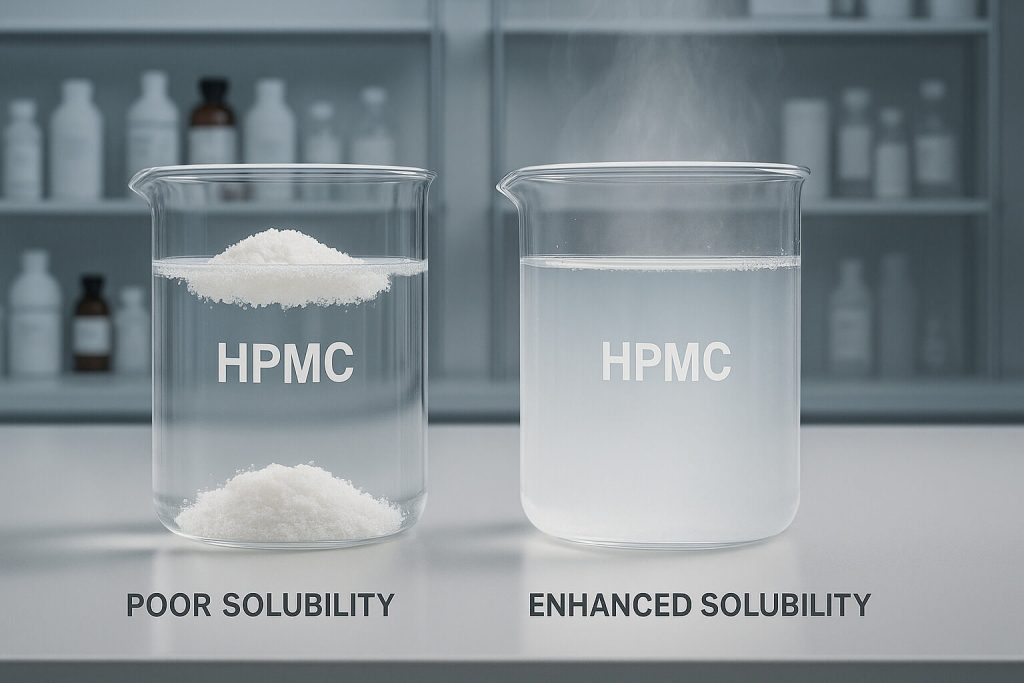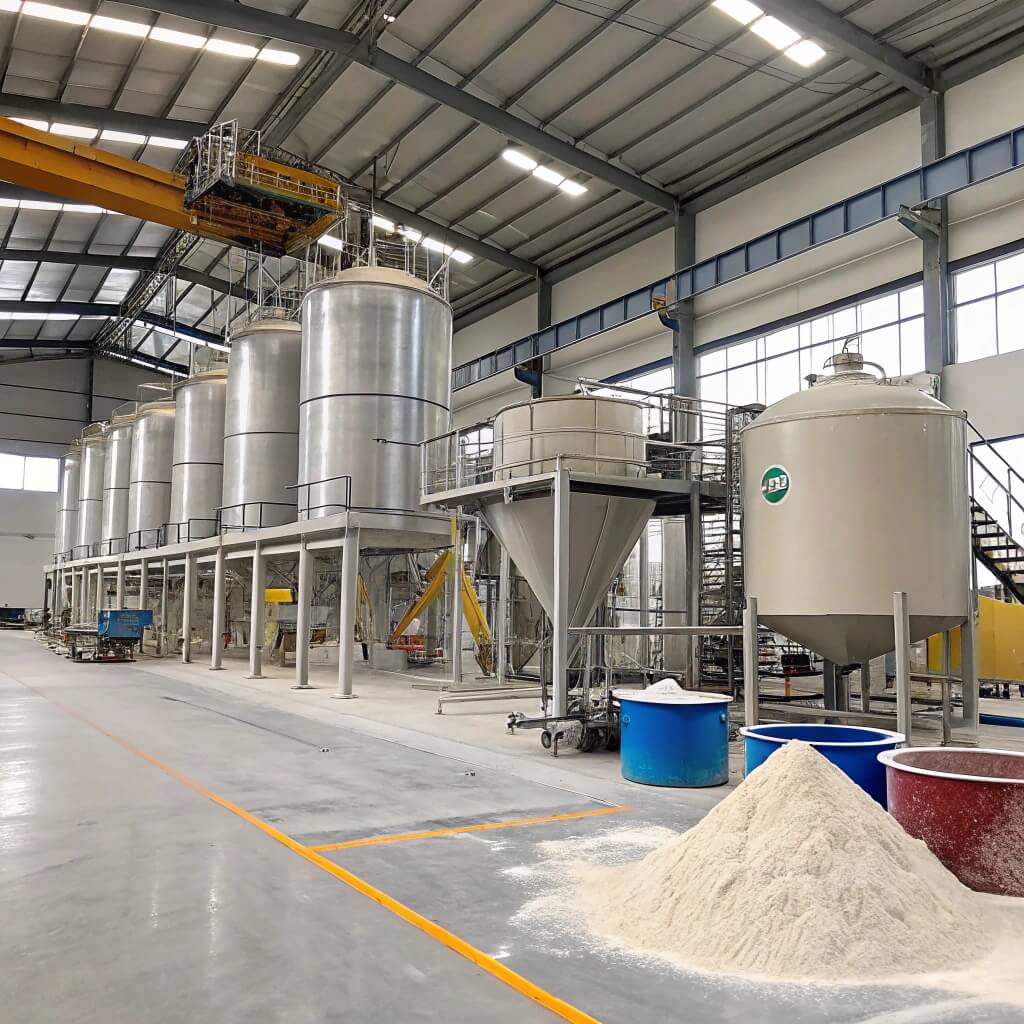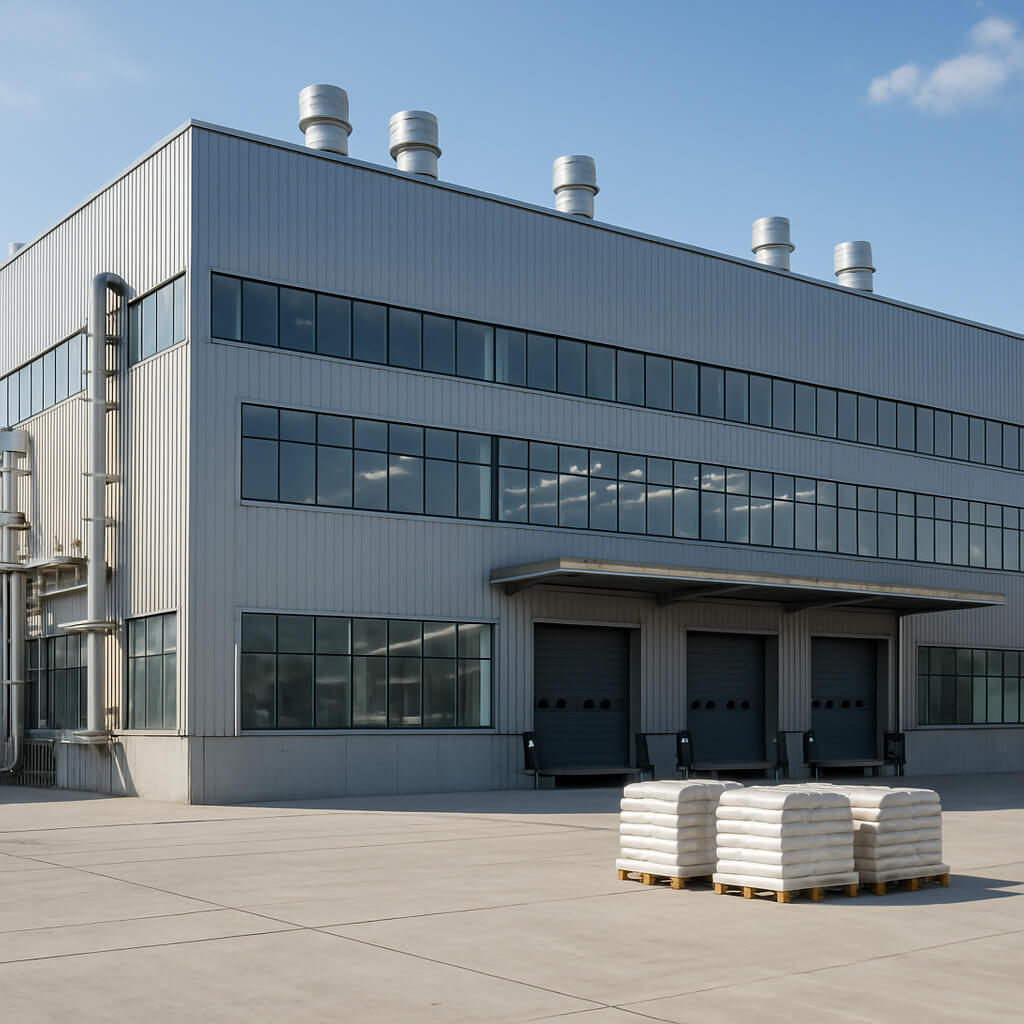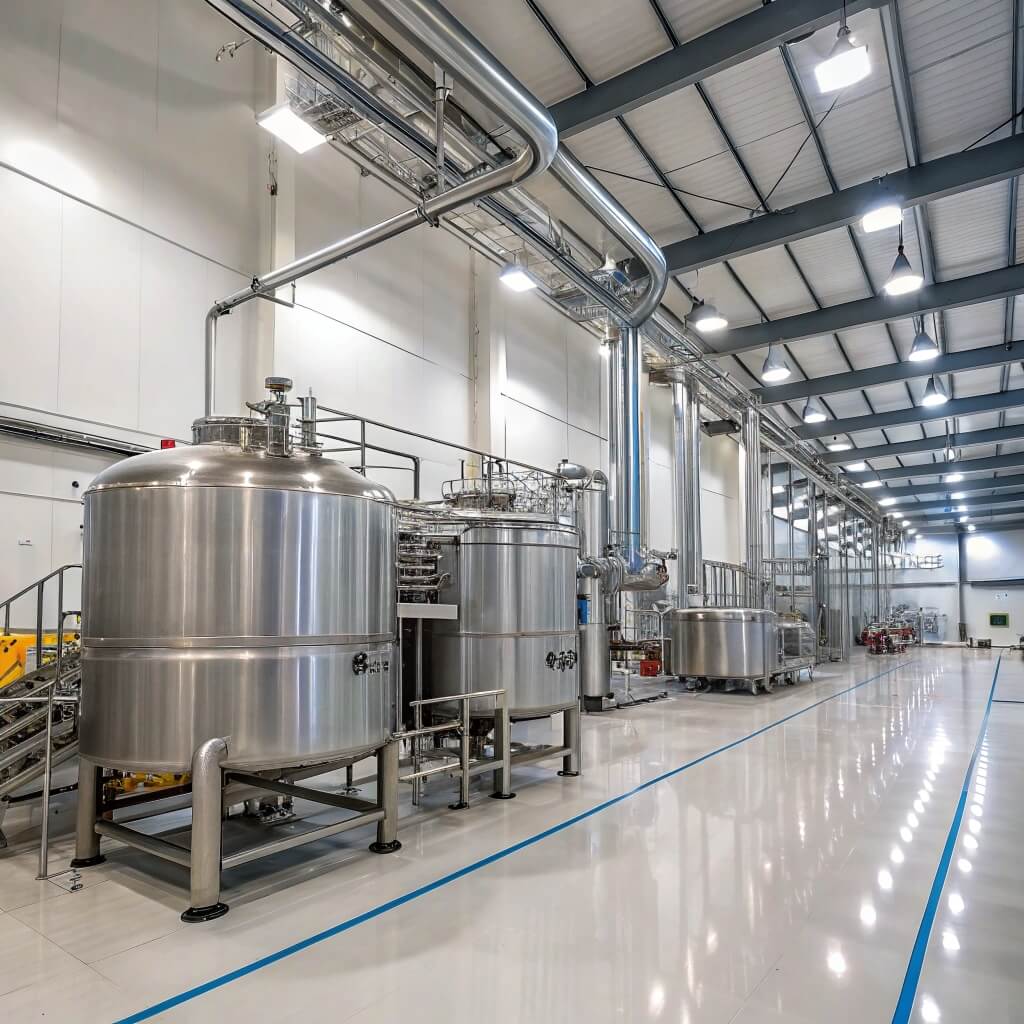The solubility of Hydroxypropyl Methylcellulose (HPMC) plays a crucial role in its application across industries like pharmaceuticals, food production, construction, and cosmetics. Understanding the factors that affect its solubility can help professionals optimize its use in various formulations and improve product performance. This article will dive into the key factors that influence the solubility of HPMC, offering valuable insights for B2B buyers, particularly those in decision-making roles within technical fields.

1. What Factors Influence the Solubility of Hydroxypropyl Methylcellulose (HPMC)?
Hydroxypropyl Methylcellulose (HPMC) is a cellulose derivative that exhibits unique properties, such as water solubility and the ability to form gels. But what determines how well it dissolves in different environments? The answer lies in a combination of several factors, including its chemical structure, molecular weight, and environmental conditions.
First, the molecular structure of HPMC directly impacts its solubility. The presence of hydroxypropyl and methyl groups in the cellulose backbone influences how the molecule interacts with water. The greater the substitution of these groups, the more soluble the HPMC becomes. In contrast, HPMC with lower substitution levels tends to have lower solubility in water.
Second, the molecular weight of HPMC also plays a significant role. HPMC with a higher molecular weight tends to dissolve more slowly, while lower molecular weight HPMC dissolves more quickly. This is crucial for industries where speed and efficiency in dissolution are key, such as pharmaceuticals and food processing.
Lastly, the temperature and pH of the environment influence the solubility of HPMC. As temperature increases, solubility improves due to the higher kinetic energy that allows molecules to interact more effectively with solvents. Similarly, pH changes can affect the ionization of the hydroxypropyl and methyl groups, altering how the HPMC interacts with water and other solvents.
| Factor | Efecto sobre la solubilidad | Consideraciones clave |
|---|---|---|
| Estructura molecular | Higher substitution = increased solubility | Optimizing for specific applications |
| Peso molecular | Higher weight = slower dissolution | Consideration for desired release rates |
| Temperatura | Increased temperature = increased solubility | Must balance heat-sensitive components |
| pH | Extreme pH can reduce solubility | Important for applications with varying pH levels |
2. How Does Temperature Impact HPMC Solubility?
You might be wondering how temperature affects HPMC solubility. Well, temperature is one of the most critical factors influencing the dissolution rate of HPMC. As temperature increases, so does the kinetic energy of the water molecules, which helps to break the bonds between HPMC molecules, leading to faster dissolution. This makes HPMC more soluble at higher temperatures.
However, there’s a catch. While elevated temperatures may improve solubility, they can also cause the material to degrade if the temperature exceeds a certain threshold. This is particularly crucial in industries such as pharmaceuticals, where the degradation of HPMC could affect the stability and effectiveness of the drug. Therefore, controlling temperature in HPMC-based processes is critical.
In practical terms, HPMC dissolution typically requires a controlled environment. For instance, in pharmaceutical tablet formulations, manufacturers often use moderate heat to ensure HPMC dissolves efficiently without compromising its structural integrity. The temperature also plays a role in controlling the viscosity of HPMC solutions. The higher the temperature, the lower the viscosity, making it easier to blend HPMC into liquid formulations.
To further illustrate this, let’s look at two common scenarios in different industries:
- Industria farmacéutica: Tablets with HPMC as a binder often undergo heat-controlled processes to ensure consistent dissolution rates.
- Industria de la construcción: Mortar mixtures with HPMC can have enhanced workability when prepared at slightly elevated temperatures, as solubility increases, making it easier to mix and apply.
| Industria | Impact of Temperature on HPMC Solubility | Example |
|---|---|---|
| Farmacéutico | Faster dissolution, must avoid overheating | Tablet formulation processes |
| Construcción | Easier mixing, higher workability | Tile adhesives and mortar mixtures |
3. How Does pH Affect HPMC Solubility?
You might be wondering how pH affects HPMC solubility. It turns out that pH is another crucial factor that influences the dissolution rate and behavior of HPMC in various solutions. Why? Because the solubility of HPMC depends on its ionization at different pH levels. In acidic environments, HPMC molecules are less likely to dissolve, while in basic or neutral conditions, HPMC typically dissolves more easily.
When HPMC is exposed to acidic conditions (low pH), the hydroxypropyl groups become less ionized, reducing the molecule’s ability to interact with water molecules. This results in decreased solubility, which can be problematic in formulations that need to maintain consistency across different pH ranges, such as in food products or pharmaceuticals. On the other hand, a higher pH (alkaline conditions) can lead to better solubility, as the hydroxypropyl groups become more ionized, enhancing the molecule’s affinity for water.
Here’s the deal. Understanding the pH of the environment where HPMC is used is vital for manufacturers. For example, in the pharmaceutical industry, pH-controlled formulations are critical for the proper release of drugs. In food applications, the solubility of HPMC may need to be adjusted based on the pH of the ingredients or processing conditions to achieve the desired texture or consistency.
| Nivel de pH | Effect on HPMC Solubility | Application Considerations |
|---|---|---|
| Acidic (Low pH) | Solubilidad reducida | Pharmaceutical formulations with low pH |
| Neutral (pH 7) | Optimal solubility | Food products and cosmetics |
| Alkaline (High pH) | Increased solubility | Some construction materials and coatings |
4. What Role Does Water Quality Play in HPMC Solubility?
Water quality is a surprisingly important factor in HPMC solubility. You might be thinking, “How could something as simple as water affect HPMC?” Well, it turns out that the purity of the water used for dissolving HPMC can have a significant impact on its solubility. Water containing impurities, such as salts or minerals, can interact with HPMC and reduce its solubility, leading to incomplete dissolution or inconsistent product quality.
For instance, hard water, which contains high levels of calcium and magnesium ions, can cause HPMC to form gels instead of dissolving fully, as these ions can interfere with the dissolution process. On the other hand, purified water (such as deionized or distilled water) generally leads to better solubility, as it lacks the minerals that could otherwise bind to HPMC and reduce its ability to dissolve.
This is particularly important in industries such as pharmaceuticals, where the consistency of HPMC dissolution is critical for ensuring accurate dosing and proper drug delivery. Here’s why this matters. A change in the water quality can lead to variations in the formulation’s behavior, potentially affecting product quality and performance.
| Calidad del agua | Impact on HPMC Solubility | Impacto en la industria |
|---|---|---|
| Hard Water | Reduced solubility, gels form | Pharmaceutical, Food |
| Distilled Water | Optimal solubility | Pharmaceuticals, Cosmetics |
| Tap Water | Varies, depends on mineral content | Food, Construction |
5. How Does the Concentration of HPMC Impact Its Solubility?
When it comes to HPMC, concentration matters. The concentration of HPMC in a solution is directly related to its solubility. As the concentration of HPMC increases, its ability to dissolve in water decreases. This is because HPMC molecules begin to interact more with each other, forming a more viscous solution. You might be wondering why this is important. In industries like pharmaceuticals, food processing, and construction, understanding the solubility at varying concentrations is crucial for creating products that meet specific performance criteria.
For example, in pharmaceutical tablets, a higher concentration of HPMC can be used to control the release of active ingredients. However, here’s the deal: if the concentration exceeds a certain level, the solution may become too thick to dissolve properly, making it harder to mix or apply. In construction, this can affect the workability of adhesives or coatings that rely on HPMC for their properties.
In the food industry, controlling the concentration of HPMC in a solution is essential for achieving the desired texture or consistency. If the concentration is too high, it could lead to an overly thick product, while too low a concentration may result in insufficient binding or gelling.
| Concentración de HPMC | Solubility Effect | Application Considerations |
|---|---|---|
| Low Concentration | High solubility, thinner solution | Pharmaceutical, Food |
| Medium Concentration | Moderate solubility, balanced | Cosmetics, Construction |
| High Concentration | Low solubility, thick solution | Controlled release, construction materials |
6. What Are the Best Solvents for Dissolving HPMC?
You might be wondering which solvents work best for HPMC. Well, there are several options depending on the desired application. Water is the most commonly used solvent for dissolving HPMC, but it can also dissolve in alcohols, glycols, and some organic solvents. The choice of solvent largely depends on the specific use case and the desired final product properties.
In the pharmaceutical industry, water is often the solvent of choice, as it provides the most efficient dissolution without the need for additional processing steps. However, in applications where HPMC needs to form a thicker gel or where a non-aqueous environment is required, solvents like ethanol or propylene glycol are used.
Here’s the deal. Understanding the solvent’s properties is crucial. If you’re working in the food industry, for instance, you’ll need to select solvents that are safe for consumption, while in construction, the solvent must be compatible with other materials like cement or adhesives.
| Solvente | Effect on HPMC Solubility | Solicitud |
|---|---|---|
| Agua | Best solubility, safe and effective | Pharmaceutical, Food |
| Etanol | Moderate solubility, faster drying | Cosmetics, Pharmaceuticals |
| Propylene Glycol | Moderate solubility, gel formation | Food, Pharmaceuticals |
7. What Are the Common Applications of HPMC That Require Solubility Control?
HPMC is used in a variety of industries, and each has different requirements for solubility. You might be wondering how solubility is managed across industries. Well, it’s all about optimizing the performance of HPMC in the final product.
In the pharmaceutical industry, HPMC is used as a binder and stabilizer. Solubility control ensures consistent drug release and effective dissolution. In food processing, HPMC is used as a thickener or emulsifier, where solubility controls texture and consistency. In construction, HPMC is commonly found in adhesives and coatings, where solubility directly impacts workability and bonding strength.
| Industria | Solicitud | Solubility Control |
|---|---|---|
| Farmacéutico | Binder, stabilizer | Consistent drug release |
| Alimento | Thickener, emulsifier | Texture, consistency |
| Construcción | Adhesives, coatings | Workability, bonding strength |
8. How Can HPMC Solubility Be Optimized in Industrial Processes?
Optimizing HPMC solubility is key to ensuring the quality and performance of the final product. You might be wondering how to achieve this in large-scale production. Well, there are several strategies, including adjusting temperature, pH, and concentration, as well as selecting the right solvent.
One effective method for optimizing solubility is to use controlled mixing. This ensures that HPMC is properly dispersed throughout the solution, preventing clumping or uneven dissolution. Additionally, using high-shear mixers can increase the rate at which HPMC dissolves, particularly in thicker solutions.
Here’s why this matters. By optimizing solubility, manufacturers can improve the overall quality of their products, ensuring that they meet industry standards and customer expectations. This is particularly important in sectors where consistency is critical, such as in pharmaceuticals and food products.
| Método | Effect on HPMC Solubility | Impacto en la industria |
|---|---|---|
| Controlled Mixing | Even dispersion, faster dissolution | Pharmaceuticals, Food |
| High-Shear Mixing | Increased solubility rate | Cosmetics, Construction |
9. What Are the Challenges with HPMC Solubility in Large-Scale Production?
When scaling up HPMC production, solubility can become a challenge. You might be asking, why does it get harder to maintain solubility in bulk? As production increases, there are more variables at play, such as inconsistent water quality, temperature fluctuations, and higher concentrations of HPMC.
One common challenge is achieving consistent solubility across large batches. Minor variations in temperature or mixing efficiency can lead to discrepancies in dissolution rates, affecting the final product’s quality.
Here’s the deal. It’s important to implement robust quality control measures in large-scale production to ensure uniform solubility and maintain product consistency. Automation and real-time monitoring can help reduce human error and improve accuracy during manufacturing.
| Desafío | Impacto en la solubilidad | Solución |
|---|---|---|
| Inconsistent Mixing | Uneven solubility | Automated mixing systems |
| Temperature Variations | Slower dissolution, inconsistency | Real-time temperature control |
| High Concentration | Reduced solubility, clumping | Optimized concentration levels |
10. How Do Quality Standards and Regulations Affect HPMC Solubility?
Quality standards and regulations play a significant role in ensuring HPMC solubility remains consistent across industries. You might be thinking, “How do these regulations affect solubility?” Well, strict guidelines in pharmaceuticals, food production, and cosmetics require manufacturers to adhere to specific solubility criteria to guarantee product efficacy and safety.
For example, in the pharmaceutical industry, regulatory bodies like the FDA set strict guidelines for solubility to ensure the correct release of drugs. Similarly, in the food industry, solubility can influence the texture and mouthfeel of products, which is also regulated to ensure consistency and safety.
Here’s why it matters. Regulatory compliance ensures that HPMC products maintain the same quality and performance standards, making it easier for companies to maintain customer trust and meet industry demands.
| Industria | Organismo regulador | Impacto de la solubilidad |
|---|---|---|
| Farmacéutico | FDA | Ensures correct drug release |
| Alimento | EFSA | Regulates texture and safety |
| Productos cosméticos | FDA | Ensures safe and consistent formulations |
Conclusión
In this article, we explored the factors affecting the solubility of Hydroxypropyl Methylcellulose (HPMC). We discussed the influence of temperature, pH, concentration, water quality, and other factors on its solubility. We also examined how solubility optimization is crucial in industries like pharmaceuticals, food, and construction. For B2B buyers and industry professionals, understanding these factors can help make informed decisions when using HPMC in their processes. Solubility control is key to ensuring product quality and consistency across various sectors.
Sección de preguntas frecuentes
Pregunta 1: ¿Qué es la hidroxipropilmetilcelulosa (HPMC)?
HPMC is a cellulose derivative used across multiple industries for its properties as a thickener, binder, and film-forming agent.
Pregunta 2: How does HPMC solubility work?
HPMC dissolves in water and some organic solvents, and its solubility depends on factors such as temperature, pH, and concentration.
Pregunta 3: How does temperature impact the solubility of HPMC?
Higher temperatures generally increase the solubility of HPMC, but excessive heat can degrade the material, so temperature must be carefully controlled.
Pregunta 4: What are the best solvents for dissolving HPMC?
Water is the most common solvent for HPMC, though ethanol and propylene glycol can also be used in specific applications.
Pregunta 5: Can HPMC be used in both hot and cold processes?
Yes, HPMC can be used in both hot and cold processes, though solubility tends to be higher in warmer solutions.




